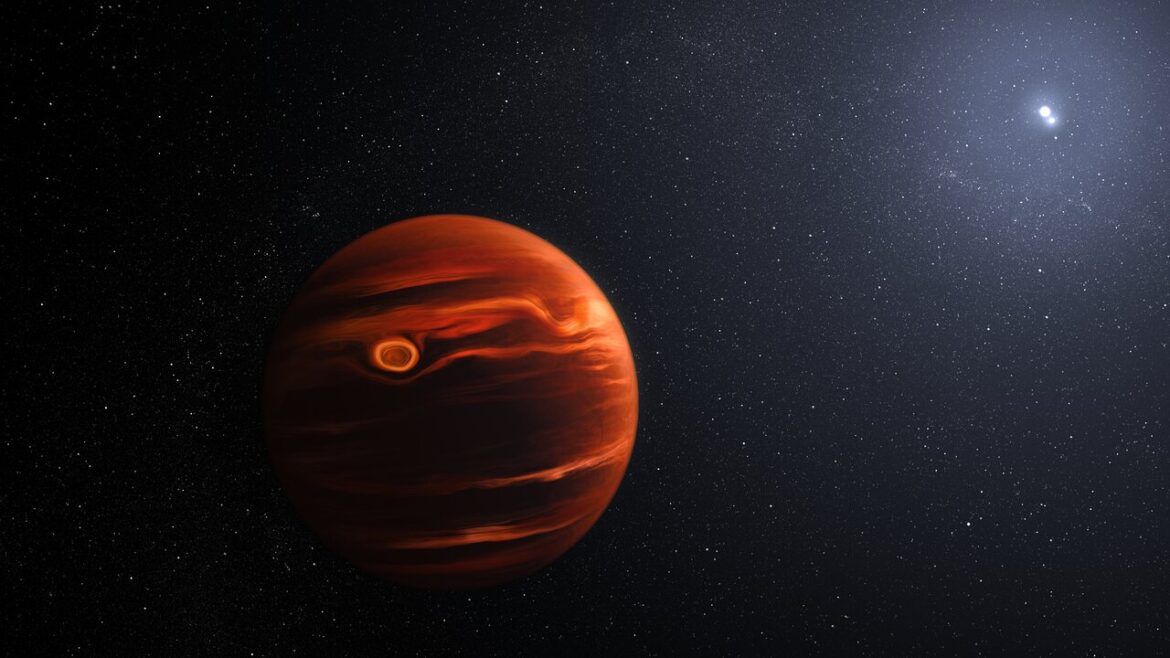Webb images young, giant exoplanets in HR 8799, detects carbon dioxide
Findings suggest giant exoplanets in HR 8799 system likely formed like Jupiter and Saturn.
The NASA/ESA/CSA James Webb Space Telescope has captured direct images of multiple gas giant planets within an iconic planetary system. HR 8799, a young system 130 light-years away, has long been a key target for planet formation studies.

The observations indicate that the well-studied planets of HR 8799 are rich in carbon dioxide gas. This provides strong evidence that the system’s four giant planets formed much like Jupiter and Saturn, by slowly building solid cores that attract gas from within a protoplanetary disk.
The results also confirm that Webb can infer the chemistry of exoplanet atmospheres through imaging. This technique complements Webb’s powerful spectroscopic instruments, which resolve the atmospheric composition.
“By spotting these strong carbon dioxide features, we have shown there is a sizable fraction of heavier elements, like carbon, oxygen, and iron, in these planets’ atmospheres,” said William Balmer, of Johns Hopkins University in Baltimore. “Given what we know about the star they orbit, that likely indicates they formed via core accretion, which is an exciting conclusion for planets that we can directly see.”

The blue and yellow lines are a best-fit model for an atmosphere that would be either low or high in metals heavier than helium, including carbon, also known as metallicity. The Webb data is consistent with a high metallicity planet. Spectral fingerprints of carbon dioxide and carbon monoxide appear in data collected by Webb’s NIRCam (Near-Infrared Camera). Credit: NASA, ESA, CSA, STScI, W. Balmer (JHU), L. Pueyo (STScI), M. Perrin (STScI)
Balmer is the lead author of the study announcing the results published today in The Astrophysical Journal. Balmer and his team’s analysis also includes Webb’s observation of a system 97 light-years away called 51 Eridani.
HR 8799 is a young system about 30 million years old, a fraction of our solar system’s 4.6 billion years. Still hot from their tumultuous formation, the planets within HR 8799 emit large amounts of infrared light that give scientists valuable data on how they formed.
Giant planets can take shape in two ways: by slowly building solid cores with heavier elements that attract gas, just like the giants in our solar system, or when particles of gas rapidly coalesce into massive objects from a young star’s cooling disk, which is made mostly of the same kind of material as the star. Knowing which formation model is more common can give scientists clues to distinguish between the types of planets they find in other systems.
“Our hope with this kind of research is to understand our own solar system, life, and ourselves in comparison to other exoplanetary systems, so we can contextualize our existence,” Balmer said. “We want to take pictures of other solar systems and see how they’re similar or different when compared to ours. From there, we can try to get a sense of how weird our solar system really is—or how normal.”
Of the nearly 6,000 exoplanets discovered, few have been directly imaged, as even giant planets are many thousands of times fainter than their stars. The images of HR 8799 and 51 Eridani were made possible by Webb’s NIRCam (Near-Infrared Camera) coronagraph, which blocks light from bright stars to reveal otherwise hidden worlds.

The 51 Eridani system is 96 light-years from Earth. This image includes filters representing 4.1-micron light as red. Credit: NASA, ESA, CSA, STScI, W. Balmer (JHU), L. Pueyo (STScI), M. Perrin (STScI)
This technology allowed the team to look for infrared light emitted by the planets in wavelengths that are absorbed by specific gases. The team found that the four HR 8799 planets contain more heavy elements than previously thought.
“Webb’s unique capabilities are allowing us to explore the wide diversity of these directly-imaged planets for the first time. This gives us important clues as to how such planetary systems have formed.” said Emily Rickman of the European Space Agency, a co-author of the study. “These new observations reiterate how valuable the HR 8799 multi-planet system is as a stepping stone to understand the formation of exoplanetary systems and of our own Solar System.”
The team is paving the way for more detailed observations to determine whether objects they see orbiting other stars are truly giant planets or objects such as brown dwarfs, which form like stars but don’t accumulate enough mass to ignite nuclear fusion.
“We have other lines of evidence that hint at these four HR 8799 planets forming using this bottom-up approach,” said Laurent Pueyo, an astronomer at the Space Telescope Science Institute in Baltimore, who co-led the work. “How common is this for planets we can directly image? We don’t know yet, but we’re proposing more Webb observations to answer that question.”
“We knew Webb could measure colours of the outer planets in directly imaged systems,” added Rémi Soummer, director of STScI’s Russell B. Makidon Optics Lab and former lead for Webb coronagraph operations. “We have been waiting for 10 years to confirm that our finely tuned operations of the telescope would also allow us to access the inner planets. Now the results are in and we can do interesting science with it.”
The NIRCam observations of HR 8799 and 51 Eridani were conducted as part of Guaranteed Time Observations programmes 1194 and 1412 respectively.
Press release from ESA Webb.


















